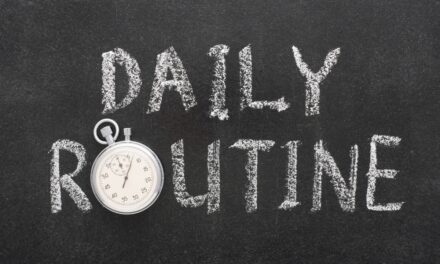Introduction
Welcome to the transformative world of Neuro-Linguistic Programming (NLP), a powerful tool that can help you break free from the shackles of unwanted habits and embrace a more fulfilling lifestyle. NLP isn’t just a psychological buzzword; it’s a practical approach to personal development that has gained immense popularity across various fields, from education to business. Whether you’re a student grappling with procrastination, a busy professional trying to quit smoking, or a coach new to the digital world, NLP offers valuable techniques for everyone.
In this comprehensive guide, we’ll explore how NLP can be used for breaking bad habits, offering insights that are particularly valuable for coaches new to digital marketing. These professionals often find themselves juggling multiple tasks and responsibilities, making it crucial to cultivate positive habits for personal and professional growth.
NLP, at its core, is about understanding the language of the mind. It teaches us how to communicate with ourselves and others more effectively to bring about desired changes in behavior. By mastering NLP techniques, you can not only improve your own life but also enhance your coaching practices, helping your clients achieve their goals more efficiently.
So, whether you’re seeking to overcome a personal hurdle or looking to enrich your coaching skills, our journey through the realm of “NLP for breaking bad habits” promises to be enlightening. Get ready to dive into the fascinating interplay of language, thought, and behavior, and discover how to reshape your habits for a more successful and satisfying life.
Understanding NLP
Neuro-Linguistic Programming (NLP), a term that may seem complex at first glance, is actually based on a simple premise: our language and thought patterns profoundly influence our behaviors and, in turn, our life outcomes. NLP, developed in the 1970s by Richard Bandler and John Grinder, stemmed from the idea that by changing how we think and speak, we can fundamentally alter our behavior and perspective.
At its heart, NLP is a set of models and principles designed to understand the human mind. It combines cognitive and communicative techniques to assist individuals in understanding and altering their thought processes. One of the key concepts in NLP is that of ‘modeling’ – observing and replicating the language structures and behaviors of successful individuals. This approach is particularly beneficial for coaches and educators, who can use these insights to foster positive change in their clients and students.
Another critical aspect of NLP is its emphasis on the sensory experiences and how they shape our reality. By becoming more aware of how we internally represent the world through our senses, we can start to change our previously automatic thoughts and reactions. For instance, an individual struggling with a bad habit can learn to associate this habit with negative sensory experiences, thereby reducing its appeal.
In essence, NLP is about reprogramming the way we think to achieve specific goals, overcome challenges, and improve communication. As we delve deeper into how NLP can be utilized for breaking bad habits, it’s crucial to remember that NLP isn’t just a set of techniques; it’s a mindset shift that opens the door to limitless personal and professional growth.
The Connection Between Habits and NLP
Understanding the intricate connection between habits and Neuro-Linguistic Programming (NLP) is essential for anyone looking to make meaningful changes in their life. Habits, whether beneficial or detrimental, are deeply ingrained patterns of behavior that we perform almost automatically. They are the brain’s way of saving energy by creating shortcuts for regular tasks. However, when these habits are harmful, they can significantly impede personal and professional development, especially for individuals in dynamic roles like coaching or counseling.
NLP offers a unique perspective on breaking these automatic patterns. It views habits not just as isolated behaviors, but as a complex interplay of thoughts, emotions, and actions. For instance, a habit like procrastination isn’t merely a time management issue; it’s often a result of deeper, subconscious thought patterns. NLP techniques aim to unpack and reframe these underlying thoughts, thereby altering the habit itself.
One of the core principles of NLP is the belief in the plasticity of the brain, or neuroplasticity. This principle suggests that our brain is capable of rewiring itself based on new experiences and learning. By employing specific NLP strategies, individuals can create new neural pathways, leading to the formation of healthier habits. This aspect is particularly empowering for coaches and educators, who can apply these principles to not only improve their habits but also to assist their clients or students in doing the same.
For example, a coach using NLP for personal development might guide a client to replace the negative self-talk that often accompanies bad habits with positive affirmations. This shift in internal dialogue can significantly impact the individual’s ability to break the habit. Similarly, NLP can help in transforming the sensory associations of a bad habit, such as associating the act of smoking with unpleasant smells or tastes, thereby reducing its allure.
In essence, the connection between habits and NLP is about understanding and altering the subconscious scripts that drive our behavior. By leveraging NLP techniques, individuals from all walks of life – be it students, therapists, or business professionals – can learn to replace their detrimental habits with positive ones, leading to more productive and fulfilling lives.
NLP Techniques for Breaking Bad Habits
Breaking bad habits can be a challenging journey, but with the right set of tools, it becomes much more manageable. Neuro-Linguistic Programming (NLP) provides a rich arsenal of techniques designed to facilitate this process. These strategies are particularly effective because they address the root cause of habits – our thought patterns and internal dialogues. Here are some key NLP techniques that can be instrumental in breaking bad habits:
Reframing: This technique involves changing the way we perceive a specific behavior or situation. For instance, if you’re trying to quit smoking, reframing can help you view smoking not as a stress-reliever but as a harmful habit that impedes your health and wellbeing. This shift in perspective can significantly reduce the habit’s appeal.
Anchoring: Anchoring is about creating a sensory association with a positive state. For example, a coach might help a client develop an anchor (like touching their thumb and forefinger together) while recalling a moment of intense happiness or confidence. Later, triggering this anchor can help overcome urges associated with a bad habit by replacing them with positive emotions.
Visualization and Mental Rehearsal: This technique requires individuals to visualize themselves successfully overcoming their bad habit. For someone struggling with procrastination, this might involve picturing themselves completing tasks efficiently and enjoying the resulting free time. This mental rehearsal can build the confidence and motivation needed to change the habit.
Swish Pattern: The Swish Pattern is an NLP technique designed to disrupt unwanted behavior patterns and replace them with more desirable ones. It involves visualizing the unwanted habit and then quickly ‘swishing’ to an image of the desired behavior, creating a neural pathway for the new behavior. Over time, this can lead to a natural preference for the positive behavior.
Belief Change: Many habits are underpinned by deep-seated beliefs. NLP techniques can be used to identify and alter these beliefs. For example, if someone believes they are not capable of speaking confidently in public, NLP can help reshape this belief into a more empowering one, thereby aiding in overcoming the habit of avoiding public speaking.
Meta-Model Questions: This involves questioning the language a person uses to describe their habit, revealing underlying limitations in their thought process. For instance, asking “How specifically does this habit limit you?” can lead to insights that motivate change.
Modeling: This involves observing and imitating the behaviors, beliefs, and strategies of those who have successfully overcome similar bad habits. By modeling their methods, individuals can learn practical ways to break their own habits.
Incorporating these NLP techniques into daily routines requires practice and persistence, but the rewards are substantial. They offer a pathway to not only breaking bad habits but also to a deeper understanding of oneself. Coaches, educators, and professionals can not only apply these techniques for their personal development but also use them to assist their clients or students in achieving lasting behavioral change.
Step-by-Step Guide to Using NLP Techniques
Breaking bad habits with NLP isn’t about a one-time effort; it’s a structured process that involves several stages. Here’s a step-by-step guide to help you effectively utilize NLP techniques for habit change:
Step 1: Identify the Habit and Underlying Patterns
Begin by clearly identifying the bad habit you want to change. Understand the triggers, contexts, and feelings associated with this habit. This step is crucial for targeting the right internal patterns.
Step 2: Set Clear, Achievable Goals
Define what success looks like for you. Instead of vague goals like “I want to stop procrastinating,” opt for specific targets such as “I will complete my tasks each day by 3 PM.”
Step 3: Employ the Reframing Technique
Use reframing to alter your perception of the habit. Ask yourself, “What positive intention is this habit fulfilling?” and “How can I meet this need in a healthier way?” For instance, if smoking is a way to relieve stress, find alternative stress-relief methods like exercise or meditation.
Step 4: Create Positive Anchors
Establish positive anchors by recalling a moment of personal strength or happiness. Associate this memory with a physical gesture. Use this anchor whenever you feel the urge to engage in the bad habit. Over time, the anchor will help evoke the positive state, reducing the habit’s hold on you.
Step 5: Practice Visualization and Mental Rehearsal
Regularly visualize yourself performing the new, positive behavior. If your goal is to eat healthily, imagine yourself enjoying nutritious meals and feeling great afterward. This mental rehearsal builds neural pathways that facilitate the adoption of new habits.
Step 6: Apply the Swish Pattern
Use the Swish Pattern to replace the bad habit with a desirable behavior. Visualize the unwanted behavior and then ‘swish’ it with an image of yourself engaging in a positive behavior. Repeat this process until the positive image becomes the dominant response to the habit’s trigger.
Step 7: Challenge and Change Limiting Beliefs
Identify any limiting beliefs that sustain your bad habit. Challenge these beliefs and replace them with empowering ones that support your new behavior.
By following these steps and consistently applying NLP techniques, you’ll gradually rewrite the script of your habits. Remember, change is a process, not an event. Be patient and persistent, and celebrate small victories along the way. As you transform your habits, you’re not just altering behaviors; you’re reshaping your identity and unlocking a more fulfilling life.
Success Stories and Case Studies
The effectiveness of NLP in breaking bad habits is not just theoretical; numerous success stories and case studies highlight its practical impact. These real-life examples serve as powerful testimonials for the transformative power of NLP techniques.
Case Study 1: Overcoming Procrastination
John, a university professor, struggled with chronic procrastination, impacting his research and teaching responsibilities. After adopting NLP techniques, particularly the Swish Pattern and Mental Rehearsal, John was able to identify and alter the thought patterns that led to his procrastination. He replaced them with visualizations of completing tasks efficiently. Within a few months, John reported a significant improvement in his productivity and a decrease in stress levels.
Case Study 2: Quitting Smoking
Sarah, a marketing executive, had been a smoker for over 15 years. Through NLP’s reframing and anchoring techniques, she changed her perception of smoking from a stress-reliever to a health hazard. She created positive anchors by associating the act of not smoking with feelings of freedom and vitality. Within six months, Sarah successfully quit smoking and has remained smoke-free for over a year.
Case Study 3: Breaking Unhealthy Eating Habits
Alex, a busy entrepreneur, had a habit of eating fast food due to his hectic schedule. By employing belief change and visualization techniques, Alex was able to develop new beliefs about food and health. He began visualizing himself enjoying healthy meals and feeling more energetic. This shift led to a complete overhaul of his eating habits, resulting in improved health and energy levels.
These cases illustrate the broad applicability of NLP in various contexts. Whether it’s tackling procrastination, quitting smoking, or adopting healthier eating habits, NLP provides the tools and techniques to effect meaningful change. For coaches, therapists, and individuals alike, these success stories offer inspiration and proof of the profound impact that NLP can have on breaking bad habits and enhancing overall quality of life.
Overcoming Challenges with NLP
Embarking on the journey of breaking bad habits using NLP is not without its challenges. Initial resistance, old patterns resurfacing, and occasional setbacks are common. However, the beauty of NLP lies in its flexibility and adaptability to individual needs. When faced with obstacles, remember that NLP is not a one-size-fits-all solution. It encourages a personalized approach, allowing you to adjust techniques to suit your unique situation. Embrace each challenge as an opportunity to learn and grow. Persistence, coupled with the adaptable nature of NLP, ensures that you can overcome these hurdles and continue moving towards your desired change.
Additional Resources and Further Learning
To deepen your understanding of NLP and its application in breaking bad habits, explore a variety of resources. Consider reading books like “Frogs into Princes” by Richard Bandler and John Grinder, or “The Structure of Magic.” Online courses and local workshops can also provide practical, hands-on experience with NLP techniques.










